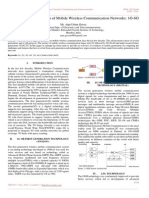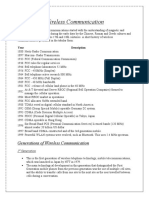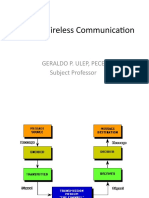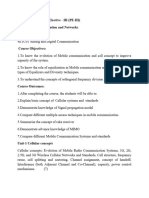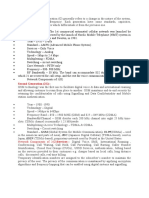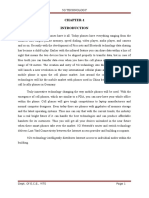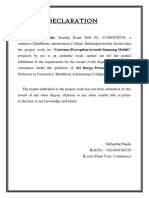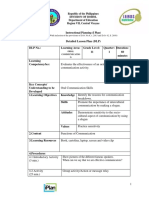0% found this document useful (0 votes)
281 views6 pagesEvolution of Mobile Generation Technology
The document discusses the evolution of mobile wireless technologies from 1G to 5G. It provides details on each generation including key features and technologies. 1G allowed analog voice calls, while 2G introduced digital signaling and text messaging. 3G brought higher data speeds and multimedia. 4G further increased speeds and bandwidth for mobile internet access. 5G is expected to offer speeds over 1Gbps, support new applications using wireless connectivity, and facilitate a fully wireless world wide web. Each generation brought major improvements in speed, capacity, functionality, and user experience over wireless networks.
Uploaded by
Shreebatschha PandaCopyright
© © All Rights Reserved
We take content rights seriously. If you suspect this is your content, claim it here.
0% found this document useful (0 votes)
281 views6 pagesEvolution of Mobile Generation Technology
The document discusses the evolution of mobile wireless technologies from 1G to 5G. It provides details on each generation including key features and technologies. 1G allowed analog voice calls, while 2G introduced digital signaling and text messaging. 3G brought higher data speeds and multimedia. 4G further increased speeds and bandwidth for mobile internet access. 5G is expected to offer speeds over 1Gbps, support new applications using wireless connectivity, and facilitate a fully wireless world wide web. Each generation brought major improvements in speed, capacity, functionality, and user experience over wireless networks.
Uploaded by
Shreebatschha PandaCopyright
© © All Rights Reserved
We take content rights seriously. If you suspect this is your content, claim it here.
/ 6






















